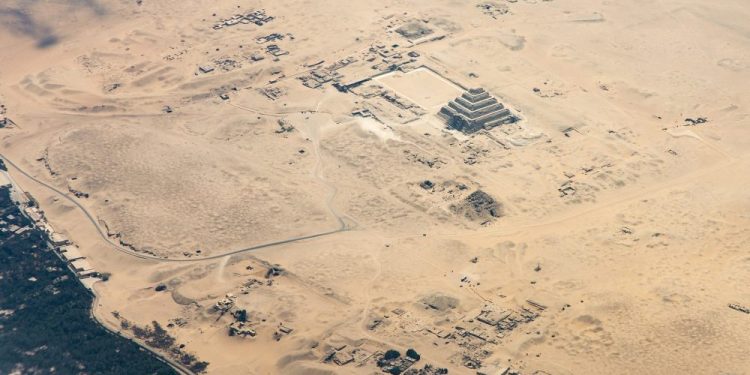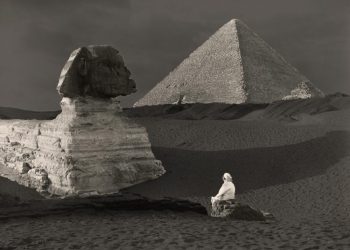Regarded as the oldest pyramid ever built in Egypt, the Step pyramid is a true ancient wonder of ancient Egyptian architecture. Here’s what you probably didn’t know about it.
There is a 6-tier, 4-sided structure at the Royal Necropolis of Saqqara in Egypt, regarded as Egypt’s earliest colossal stone building. Thought to have been erected in the 27th century BC, during the start of the third Dynasty of Egypt, the structure is considered the earliest large-scale cut stone construction. It is Egypt’s first stone pyramid, and it is believed to have changed the history of architecture in Egypt forever. Believed to have been commissioned by Pharaoh Djoser, the Step Pyramid is thought to have originally stood 62.5 meters. With a base of 109 m × 121 m (358 ft × 397 ft), it was clad in polished white limestone.
It is considered the proto-pyramid, and it left a deep imprint in the history of the land of the Pharaohs. Although its construction is believed to have been ordered relatively early in Djoser’s reign, it isn’t the first monument erected by the founding father of the third dynasty. The pyramid is thought to have been planned and designed by Imhotep, a young architect in Djoser’s ranks. Although Imhotep built the pyramid, he did not construct all of Djoser’s structures. Djoser’s first monument, erected at Beit Khallaf, was a classical, large rectangular mastaba constructed primarily out of mud brick. Measuring around 96 meters long and 50 meters wide, the mastaba rose to a height of 10 meters.
But it was a typical structure, and Djoser’ wanted more. Luckily for Imhotep, the Pharaoh recognized the young architects’ skill and vision and gave him free hands to do as he pleased to build a second monument at Saqqara. Thus, according to scholars, Imhotep supervised the construction of the Step Pyramid complex and all royal monuments after it. However, of all the monuments erected by Djoser (he also built temples at Heliopolis and Horbeit in the Delta), the Pyramid at Saqqara is the most intriguing for several reasons. The Step pyramid was impressive not that much because of its odd, never-before-seen shape but because of the difficulty involved in building such a structure made mostly of stone.
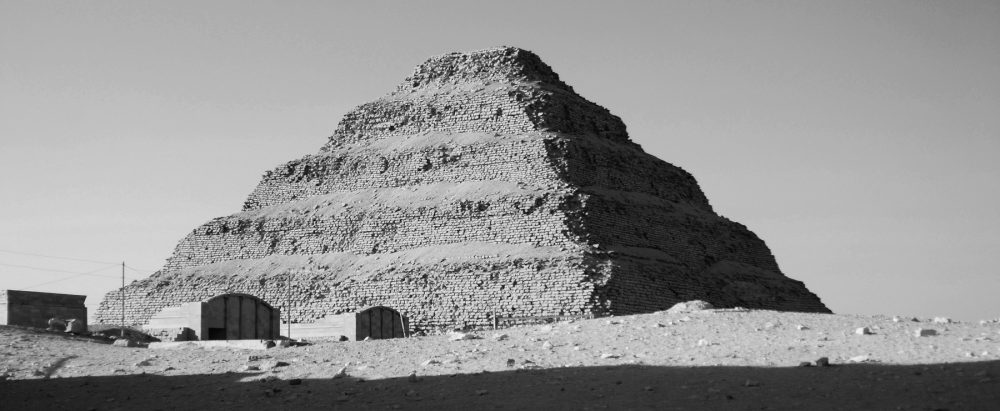
Scholars argue that Imhotep most likely faced many issues in presenting stone elements previously constructed in mud-brick, wood, reeds, and other less durable materials. Perhaps most interesting are the architectural elements represented at the Saqqara Pyramid; they appeared here first and last time. Similar architectural elements were not repeated in later periods, and experts have failed to find similar details in nearby pyramids. The construction phases involved in building the Step Pyramid are very important and speak of the project’s complexity. Experts agree that the building of the Step Pyramid underwent many phases.
Scholars maintain that before workers erected the first mastaba–what is now the bottom layer of the Step pyramid–they sank a shaft in the rock, 28 meters deep and 7 meters square. This shaft would become the main part of a massive underground world built beneath the pyramid complex, with a total length of around 5.7 kilometers. The Pyramid began obtaining its recognizable stepped shape when the builders included additional mastabas above the original one. To do so, the builders had to add to the ground area for the superstructure on the northern side. The original mastaba, the bottom layer of the pyramid, is the first royal mastaba with a square plan; its sides measured 63 meters long and were around 8 meters high.
The idea that the pyramid was built in stages–throughout several years–is the most accepted theory explaining how it obtained its final shape. The construction progressed from its initial square mastaba shape to the final six-tier pyramid we see today. As noted by Jean-Philippe Lauer, the archeologist who excavated the site, there were a total of six additions to the pyramid. Experts suggest that around every three years, a new, major expansion took place. The first alteration to the pyramid is believed to have been an extension of three meters to all sides. Imhotep’s second addition is thought to have transformed the mastaba from a square shape to its rectangular shape; this was achieved by adding around 9 meters to the eastern side.
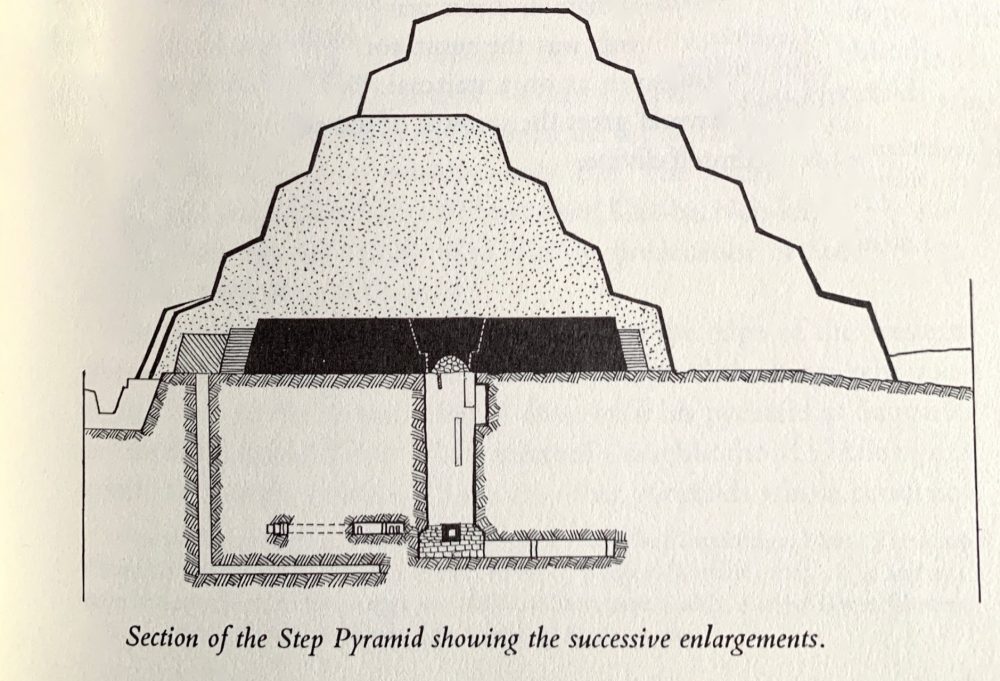
Before the new mastaba was cased, a new transformation took place: Imhotep extended each side around three meters. This addition turned the mastaba into the lower stage of a step pyramid, totaling four mastabas superimposed, one above the other. This four-tier structure is thought to have been the final stage of the pyramid. For some reason, Imhotep decided to add a few more levels. The four-stepped structure was expanded towards the north and west, resulting in the pyramid’s six recognizable steps we still see today. The step pyramid’s final dimensions are thought to have been 140 meters from east to west and around 118 from north to south.
The total volume of the Step Pyramid is 330,400 cubic meters (11,667,966 cu ft), which is curiously more than the third-largest pyramid at the Giza plateau, the Pyramid of Menkaure, which has a total volume of 235,183 cubic meters (8,305,409 cu ft). To build the Step Pyramid, its architect, Imhotep, is believed to have used Royal Cubits. Although regarded as Djoser’s final resting place by Egyptologists, the mummified remains of King Djoser have never been discovered. However, experts argued that part of a foot discovered in the subterranean chambers of the Step Pyramid most likely belonged to Djoser.

Step Pyramid: What you probably didn’t know
Not only is the Step Pyramid of Djoser the first pyramid in Egypt, but the pyramid’s odd shape appeared entirely abruptly and surprisingly in the history of Egypt. Never before did any ruler attempt to build such a monument. Scholars agree that the social implications of such a huge project, the size of the stones, and the necessary materials are staggering. The Pyramid is astounding in its departure from previous architecture. It also sets numerous significant precedents, the most important of which is its status as the very first monument structure made of stone. The process that involved building such a structure was far more labor-intensive than anything previously attempted in Egypt.
Although the Step Pyramid appeared abruptly, the structure is believed to draw precedents from a structure at Saqqara cataloged by archaeologists as mastaba 3038. This structure is thought to have been built around 2,700 BC and would have become an elongated step pyramid had its builders not left one of its sides uncovered. Although the Step Pyramid was revolutionary and changed ancient Egyptian architecture, step pyramids were not that famous in Egypt. Whether it is because of their complicated shape or the intensive construction process involved, several successors of King Djoser attempted to replicate the Step Pyramid but failed. In fact, it wasn’t until the Fourth Dynasty of Egypt, with the rise of Pharaoh Sneferu, that Egypt would see the birth of another Pyramid.
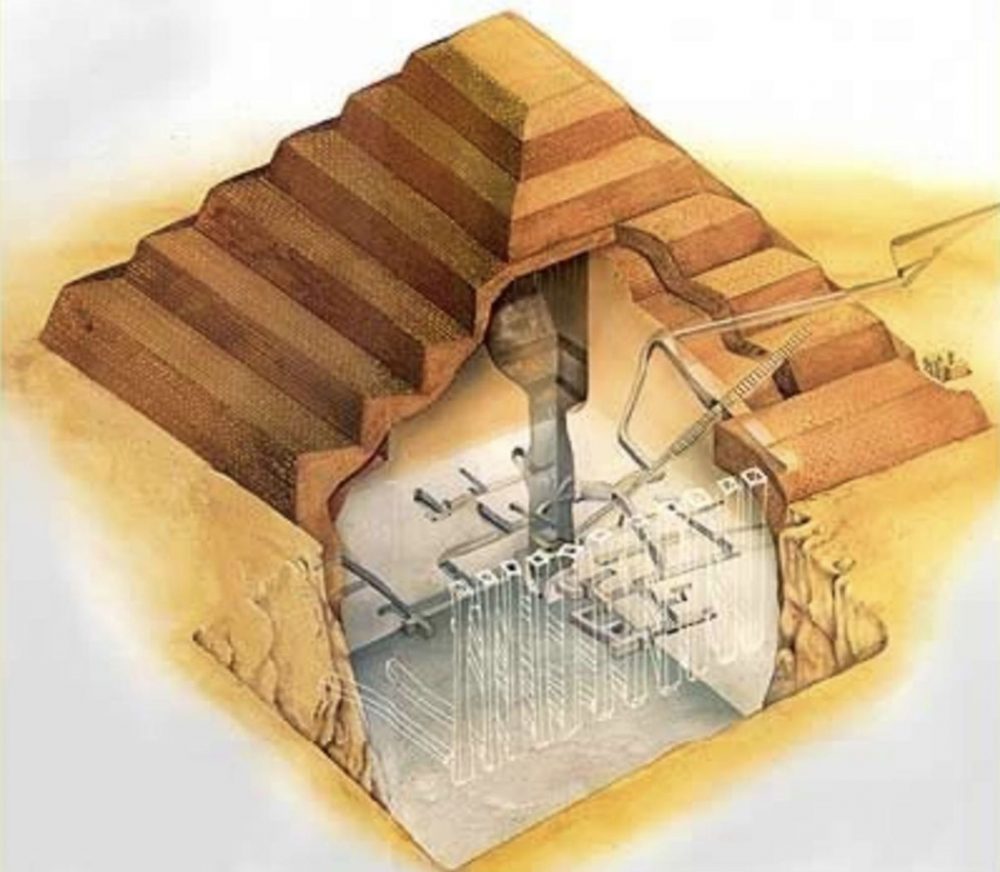
The Step Pyramid and its temple complex are certainly innovative and staggering. However, what lies beneath the Step Pyramid complex is praiseworthy. There is a massive, 5-7 kilometer-long underground world carved by the pyramid’s builders into the bedrock of the Saqqara plateau. Just how the ancients excavated and moved 5-7 kilometers worth of tunnels, chambers, magazines, and shafts remain a mystery no one has been able to answer fully.
Join the discussion and participate in awesome giveaways in our mobile Telegram group. Join Curiosmos on Telegram Today. t.me/Curiosmos



